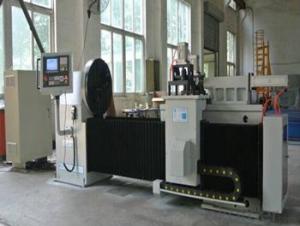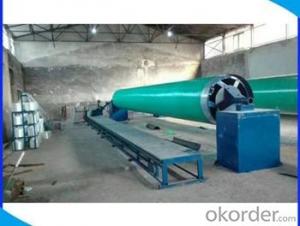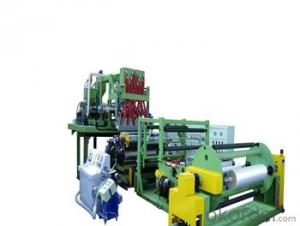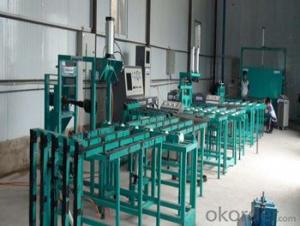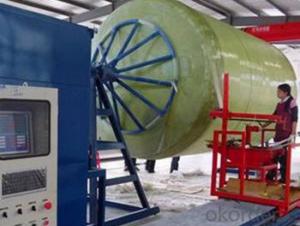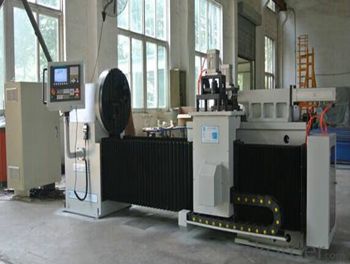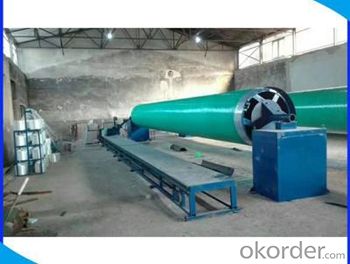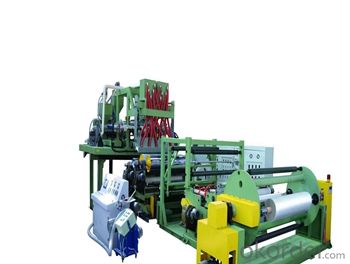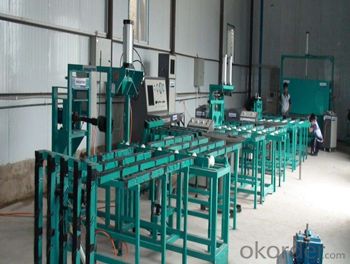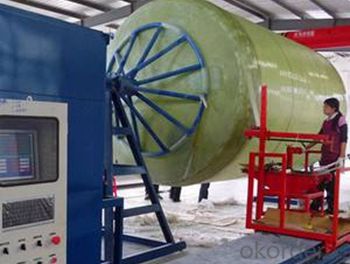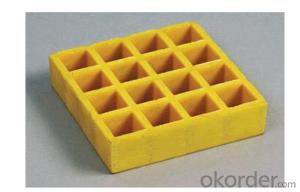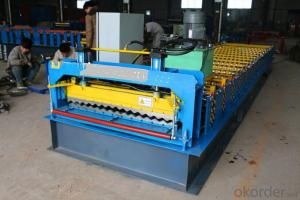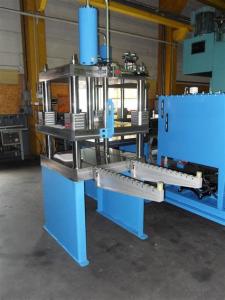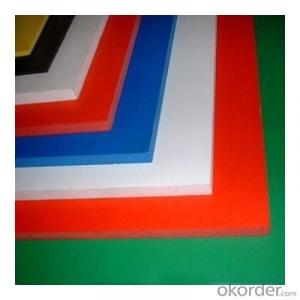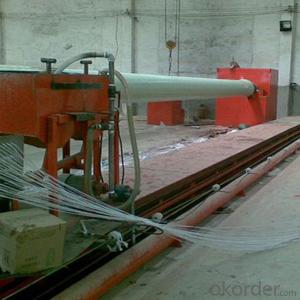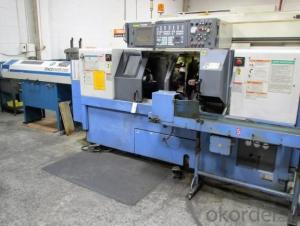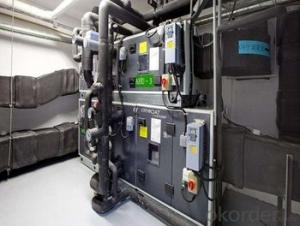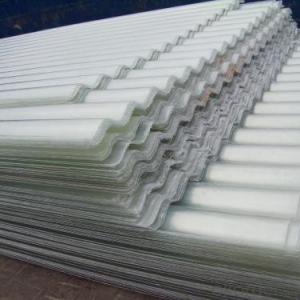FRP Pultrusion Profiles - FRP Pultruded Grating with Anti-Corrosion, Anti-Rust, and Best Quality of New Design
- Loading Port:
- Tianjin
- Payment Terms:
- TT OR LC
- Min Order Qty:
- 1 m.t.
- Supply Capability:
- 300000 m.t./month
OKorder Service Pledge
OKorder Financial Service
You Might Also Like
PRODUCT DESCRIPTION
Pultruded grating is made by a particular assembly process, which using “I” shape as its main load-bearing and special rod to go through the bearing bar. Pultruded grating include the standard grating and the custom grating, the custom grating can be designed to meet customer’s requirement or special using condition by changing the shape, size and space of the bearing bars, the surface can be covered with lozenge panel, grit panel, or added the anti-slippery sand directly.
FRP pultruded grating has the most characteristics of molded grating, but it has its distinct advantages, it has very high fiberglass content in the loading direction, so it has very high load capability, it has more superiority when used at wide span, so that the basic support will be decreased and the project cost will be reduced accordingly.
SPECIFICATION
The standard space between two crossbars is 6 inch or 12 inch.
Thickness (mm) | Bar width (mm) | Open space (mm) | Open rate (%) | Approx weight (kg/m |
25.4 | 15.2 | 22.8 | 60 | 13.2 |
25.4 | 15.2 | 15.2 | 50 | 15.9 |
25.4 | 15.2 | 10.1 | 40 | 18.5 |
25.4 | 40 | 10.8 | 21 | 14.5 |
38.1 | 15.2 | 22.8 | 60 | 15.8 |
38.1 | 15.2 | 15.2 | 50 | 19.1 |
38.1 | 15.2 | 10.1 | 40 | 22.4 |
50.8 | 25.4 | 25.4 | 50 | 16.6 |
50.8 | 25.4 | 12.7 | 33 | 21.1 |
CHOICE FOR PULTRUDED GRATING
Resin: GP resin, ISO resin, VE resin, Phenol resin
Color choice: Yellow, gray, green, custom color
Surface choice: Groove surface, grit surface, lozenge cover surface
FEATURES
a. Anti-corrosion and anti-rust
b. Light weight and high strength
c. Anti-flammable
d. Anti- fatigue
e. Safe and anti-slippery
f. Anti-ageing
g. Easy of maintenance
h. Excellent electromagnetism property
i. Good economic benefit
FIELDS SERVED
Sewage treatment,
water supply and drainage,
chemical industry,
oil industry,
power engineering,
pulp and paper,
construction engineering,
spinning, marine engineering.
COMPANT DESCRIPTION
CNBM,China National Building Materials Group is a state-owned enterprise in charge of administrative affairs in china building materials industry. Established in 1984, CNBM is a large group corporation of building materials with total assets of 25 billion RMB and a total staff of 30,000.CNBM now owns 200 subordinating firms of solely owned and joint-venture companies.
CNBM International Corporation is one subsidiary of CNBM, we focus on offering good-quality products,professional service and complete solution to our customers. Strong delivery capacity, advanced technology& management, strong financing capability and excellent after-sale service are our advantages in sharing international market.
FAQ
Q1.What's your sample policy?
A:We can supply the sample if we have ready parts in stock, but the customers have to pay the courier cost.
Q2.Can you produce according to the samples?
A: Yes, we can produce or modify the products according to your request.
Q3.How do you deliver the goods to my country?
A:We can provide international express, such as DHL, EMS, UPS, FedEx, etc. We select air freight and sea freight upon your requests. Quotations if without mentioning the shipping costs are shipping fee excluded.
Q4.How much does it cost to ship to my country?
A:When you goanna to place an order, please contact us, because different country has different freight.
Q5.How to get the catalogue?
A:please contact us and tell us what you are looking for.
We will try our best to meet customers' demands. Welcome you come here to visit us. We sincerely welcome partners around the world to establish business cooperation with us on the basis of mutual trust, benefit and development.
PICTURES
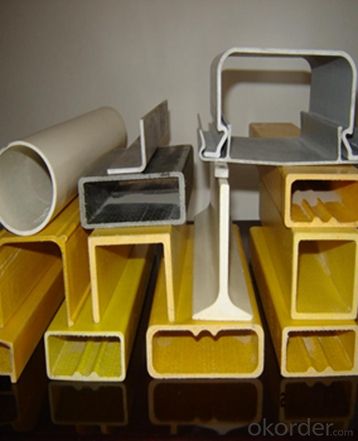
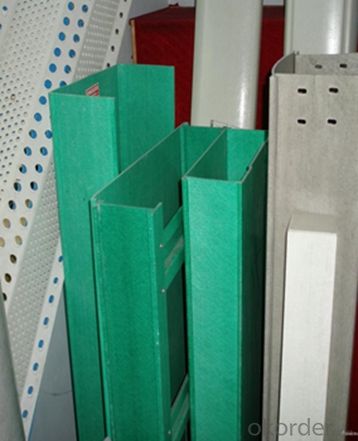
- Q: Can FRP pultrusion profiles be used in modular construction?
- Certainly, FRP (Fiber Reinforced Polymer) pultrusion profiles are a viable option for integration into modular construction. These profiles possess advantageous qualities, including a lightweight composition, exceptional strength, resistance to corrosion, and superb thermal and electrical insulating properties. These attributes make them an ideal choice for implementation in modular construction, where the focus is on prefabrication, transportation, and swift assembly. The utilization of FRP pultrusion profiles within modular construction yields numerous benefits. Firstly, their lightweight nature facilitates easy handling and transport, which consequently reduces logistical costs and effort. Secondly, their high strength-to-weight ratio ensures structural integrity without adding unnecessary weight to the modular components. This is especially advantageous in scenarios where weight reduction is critical, such as rooftop installations or areas with limited load-bearing capacity. Moreover, the corrosion resistance of FRP profiles eliminates the necessity for regular maintenance and enhances the longevity of the modular construction. This proves particularly advantageous in challenging environments, like coastal regions or chemical processing facilities, where traditional construction materials like steel may rapidly deteriorate. Furthermore, FRP pultrusion profiles can be easily tailored to fulfill specific design requirements. They can be manufactured in diverse shapes, sizes, and colors, granting flexibility in modular construction design. Additionally, these profiles can be seamlessly integrated with other construction materials, such as concrete or wood, ensuring compatibility with existing modular systems. To summarize, the lightweight nature, high strength, corrosion resistance, and customization capabilities of FRP pultrusion profiles make them highly suitable for modular construction. Their implementation in this field improves efficiency, reduces costs, and enhances the overall performance and durability of modular buildings and structures.
- Q: Can FRP pultrusion profiles be used in the renewable energy and solar power industry?
- The renewable energy and solar power industry can effectively utilize FRP (Fiber Reinforced Polymer) pultrusion profiles. These profiles possess several key characteristics that make them ideal for such applications. To begin with, the high strength-to-weight ratio of FRP pultrusion profiles is crucial in the renewable energy sector. They are lightweight yet strong, allowing them to withstand various environmental conditions while remaining cost-effective. Additionally, these profiles offer excellent corrosion resistance, ensuring durability and longevity in outdoor and potentially corrosive environments like solar power plants or wind farms. Moreover, FRP pultrusion profiles have outstanding electrical insulation properties, making them suitable for electrical applications commonly found in the renewable energy industry. Furthermore, these profiles can be easily customized into various shapes and sizes, enabling the design and engineering of complex structures required for solar power installations or wind turbine blades. Furthermore, FRP materials are non-conductive and non-magnetic, ensuring their safety for use in electrical and magnetic fields associated with renewable energy systems. In conclusion, FRP pultrusion profiles provide a combination of strength, durability, lightweight, corrosion resistance, and electrical insulation properties that make them highly suitable for use in the renewable energy and solar power industry.
- Q: Are FRP pultrusion profiles resistant to biological growth, such as mold or mildew?
- FRP pultrusion profiles are highly resistant to biological growth, such as mold and mildew. These profiles have a non-porous structure that makes it difficult for microorganisms to attach and grow. They are typically made with a combination of resin and glass fibers, both of which naturally resist biological growth. In contrast to materials like wood or metal, FRP does not create an ideal environment for mold or mildew. The smooth and non-porous surface of FRP prevents moisture absorption, which is necessary for microorganisms to thrive. Additionally, FRP materials lack organic compounds that can support the growth of mold or mildew, thus enhancing their resistance to biological degradation. When it comes to applications that require resistance to biological growth, FRP pultrusion profiles offer a significant advantage over other materials. They are commonly used in environments with high humidity, moisture, or water exposure, such as marine, agricultural, or wastewater treatment facilities. Furthermore, FRP profiles are frequently employed indoors in areas where mold or mildew growth is a concern, such as sanitary areas or food processing plants. Overall, FRP pultrusion profiles are an excellent solution for combating biological growth, including mold and mildew. Their non-porous nature, combined with the inherent resistance of the materials used in their manufacturing, ensures durability and longevity in environments where microbial growth is a potential issue.
- Q: Are FRP pultrusion profiles resistant to chemicals used in semiconductor manufacturing?
- Yes, FRP pultrusion profiles are highly resistant to the chemicals typically used in semiconductor manufacturing. The composite materials used in FRP profiles have excellent chemical resistance, making them ideal for withstanding the corrosive effects of various chemicals used in this industry.
- Q: Can FRP pultrusion profiles be used in the construction of industrial flooring?
- Yes, FRP pultrusion profiles can be used in the construction of industrial flooring. These profiles are lightweight, durable, and corrosion-resistant, making them an ideal choice for industrial applications. They offer high strength-to-weight ratio, excellent load-bearing capacity, and resistance to chemicals, moisture, and extreme temperatures. Additionally, FRP pultrusions can be customized to meet specific design requirements, making them versatile for various industrial flooring applications.
- Q: Are FRP pultrusion profiles resistant to high-pressure water jets?
- Yes, FRP pultrusion profiles are generally resistant to high-pressure water jets due to their inherent corrosion resistance and ability to withstand harsh environmental conditions.
- Q: Are FRP pultrusion profiles suitable for the manufacturing of boat hulls?
- Yes, FRP (Fiber Reinforced Polymer) pultrusion profiles are suitable for the manufacturing of boat hulls. FRP pultrusion profiles offer several advantages that make them ideal for boat hull construction. Firstly, FRP pultrusion profiles are lightweight yet extremely strong and durable. This makes them ideal for boat hulls as the lightweight construction allows for improved fuel efficiency and increased speed. Additionally, the high strength-to-weight ratio ensures that the boat can withstand the stresses and strains of the water without compromising its structural integrity. Secondly, FRP pultrusion profiles are highly corrosion-resistant. This is a crucial characteristic for boat hulls as they are constantly exposed to water, salt, and other corrosive elements. The corrosion resistance of FRP pultrusion profiles ensures that the boat hull remains intact and retains its performance over time, reducing the need for frequent maintenance and repairs. Furthermore, FRP pultrusion profiles offer design flexibility. They can be easily molded into various shapes and sizes, allowing for customization and optimization of boat hull designs. This flexibility enables boat manufacturers to create hulls that are not only functional but also aesthetically appealing. In addition to their strength, durability, corrosion resistance, and design flexibility, FRP pultrusion profiles also offer excellent electrical and thermal insulation properties. This is particularly important for boat hulls as it helps to prevent electrical currents and heat from passing through the hull, ensuring the safety and comfort of passengers and crew. Overall, FRP pultrusion profiles provide an excellent solution for the manufacturing of boat hulls. Their lightweight, strong, and corrosion-resistant properties, along with design flexibility and insulation capabilities, make them an ideal choice for boat manufacturers looking to create high-performance and long-lasting vessels.
- Q: Are FRP pultrusion profiles resistant to electrical surges or lightning strikes?
- FRP pultrusion profiles have inherent electrical insulation properties due to their composition of fiberglass reinforcement and resin matrix. This insulation makes them resistant to electrical surges and lightning strikes to some extent. However, it is important to note that no material can provide absolute protection against extremely high voltage electrical surges or direct lightning strikes. In such cases, additional measures like grounding and lightning protection systems are necessary to ensure the safety of structures or equipment. Therefore, while FRP pultrusion profiles offer some level of resistance to electrical surges and lightning strikes, it is advisable to consult with experts and adhere to relevant safety standards when designing and installing electrical systems in areas prone to such events.
- Q: Can FRP pultrusion profiles be used in oil and gas applications?
- Yes, FRP (Fiber Reinforced Plastic) pultrusion profiles can be used in oil and gas applications. FRP materials have excellent corrosion resistance, high strength-to-weight ratio, and low maintenance requirements, making them suitable for various demanding environments, including oil and gas. Additionally, FRP pultrusion profiles can be customized to meet specific requirements, such as resistance to chemicals, high temperatures, and fire.
- Q: Are FRP pultrusion profiles resistant to moisture?
- FRP pultrusion profiles possess an exceptional ability to withstand moisture. During the manufacturing process, fiberglass reinforcements are saturated with a resin matrix, usually polyester, vinyl ester, or epoxy. These resins naturally repel moisture, making FRP pultrusion profiles well-suited for a wide range of applications that involve exposure to moist or humid environments. Unlike conventional materials like wood or steel, FRP does not absorb water, eliminating the risks of swelling, warping, or corrosion. This moisture resistance is particularly advantageous in sectors such as construction, infrastructure, and the marine industry, where profiles may encounter rain, saltwater, or high humidity. Moreover, the resin matrix employed in FRP pultrusion can be fortified with additives or coatings to enhance its moisture resistance further. For instance, UV inhibitors can be incorporated to safeguard against degradation caused by sunlight exposure. Fire-retardant coatings can also be applied to fulfill specific safety requirements. In summary, FRP pultrusion profiles offer outstanding moisture resistance, establishing them as a resilient and dependable choice for applications where moisture exposure is a concern.
Send your message to us
FRP Pultrusion Profiles - FRP Pultruded Grating with Anti-Corrosion, Anti-Rust, and Best Quality of New Design
- Loading Port:
- Tianjin
- Payment Terms:
- TT OR LC
- Min Order Qty:
- 1 m.t.
- Supply Capability:
- 300000 m.t./month
OKorder Service Pledge
OKorder Financial Service
Similar products
Hot products
Hot Searches
Related keywords
